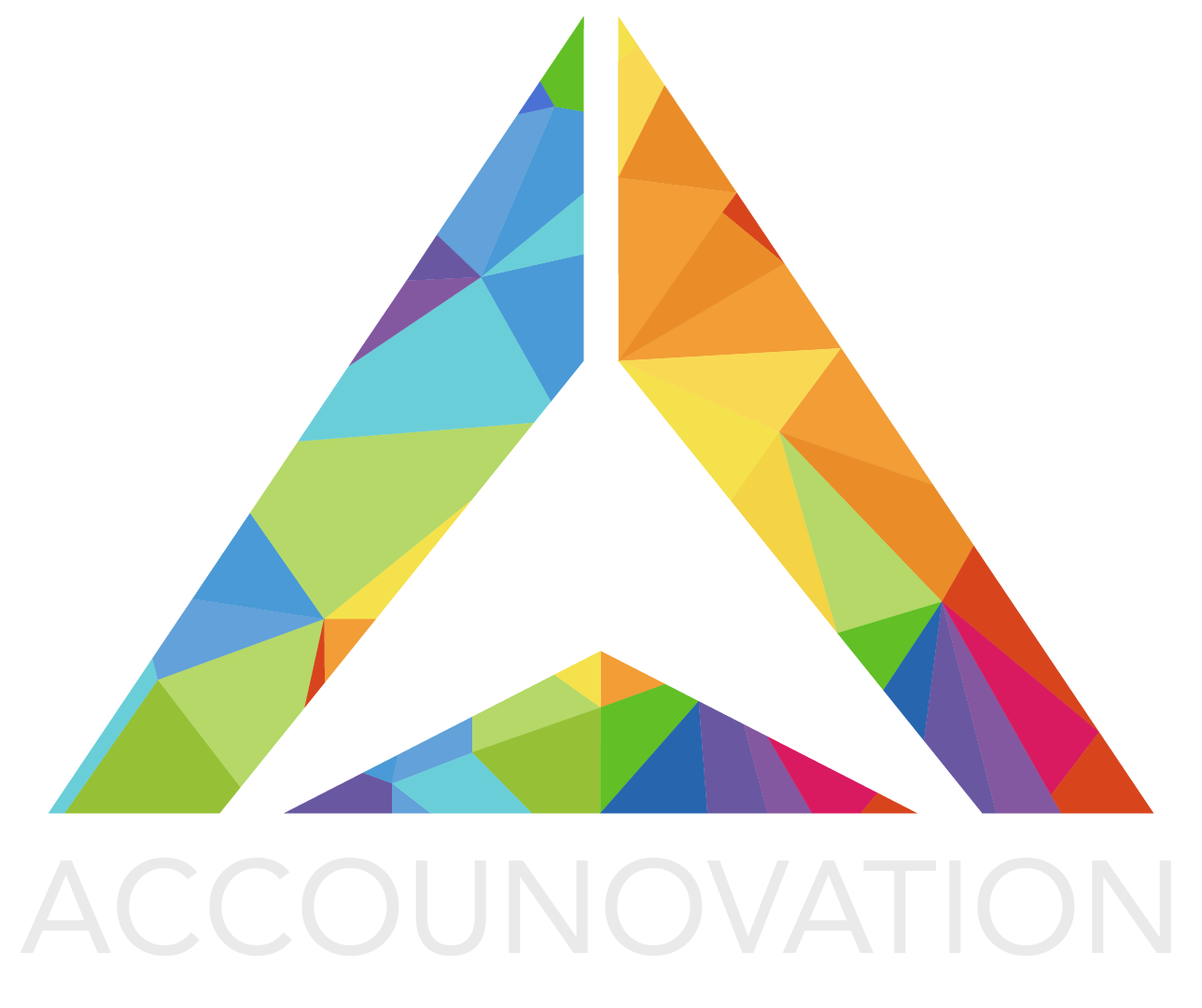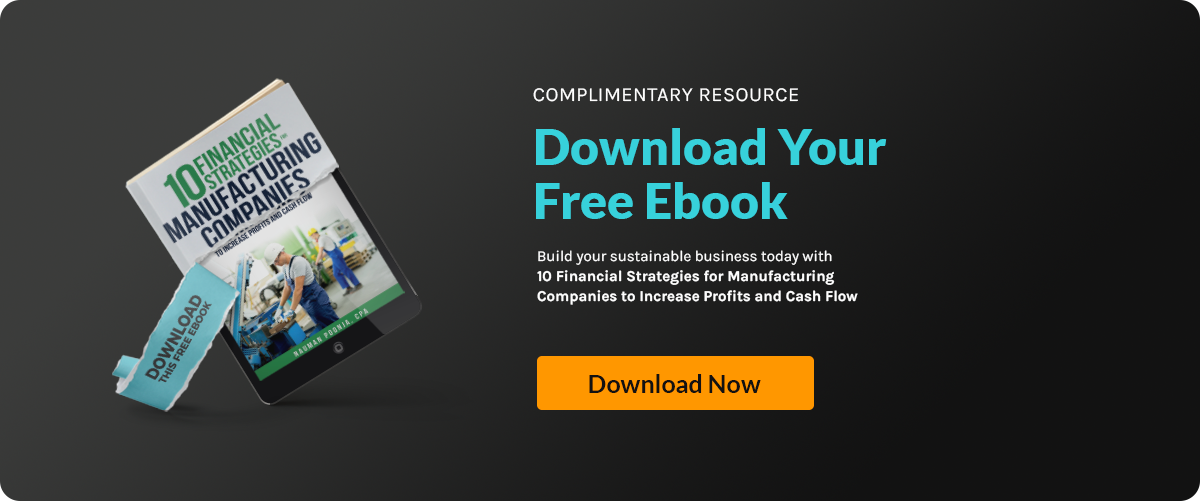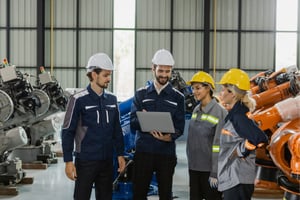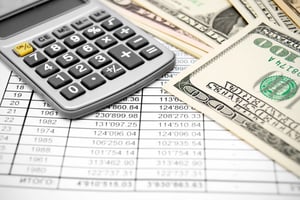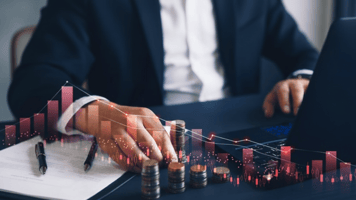Streamlining the Financial Planning Process for Equipment Upgrades

Upgrading equipment comes with a lot of excitement—and financial pressure. Interestingly, 79% of businesses that invest in new equipment or software use at least one form of financing to make it happen. This highlights just how critical financial planning is in ensuring smooth, cost-effective upgrades. Without a well-thought-out plan, even the best equipment could end up being more of a burden than a benefit.
In this guide, we’ll show you how to plan effectively for equipment upgrades, so you can avoid costly missteps and feel confident in your investment decisions. Ready to get started? Keep reading.
The Financial Planning Process for Capital Investments
Investing in new manufacturing equipment is a significant step that requires careful planning. It’s not just about finding the right equipment but also about making sure the upfront costs fit your financial model. You need a clear idea of what your business needs now and in the future. Following these best practices will help you make well-informed decisions and avoid costly mistakes.
Here are the steps involved in the financial planning process for capital investments:
- Cash Flow Forecasting: Ensure your business has enough cash on hand to cover the upfront investment and ongoing maintenance.
- Budgeting: Compare options, considering both the purchase price and long-term maintenance costs.
- Resource Allocation: Allocate funds efficiently, making sure equipment downtime and repairs or replacements are accounted for.
- Return on Investment (ROI): Calculate how the new or upgraded equipment will impact productivity, uptime, and machine failure rates.
- Maintenance and Repair Planning: Consider the long-term costs of maintaining and upgrading equipment to extend its life.
Conducting Analysis for Depreciation in Equipment Investments
When planning capital investments, considering depreciation is essential. It impacts both your tax deductions and the long-term value of the piece of equipment. Understanding how it breaks down over time can save you money and help companies stay proactive in managing their assets.
Here’s a step-by-step guide to conducting an analysis for depreciation:
Step 1: Choose a Depreciation Method
There are several methods to calculate depreciation, each with different advantages.
- Straight-line: Easiest to calculate, with a fixed depreciation amount each year.
- Declining balance: Depreciates faster in the early years, useful for equipment that loses value quickly.
- Units of production: Ideal for machines where usage fluctuates year to year. Choose the method based on how your equipment’s value will diminish and its usage.
Step 2: Calculate Depreciation
Once the method is chosen, apply the formula specific to that method. For straight-line, it’s the cost minus salvage value divided by the asset’s useful life. For declining balance, it involves a fixed percentage of the remaining value each year. Units of production use actual output or usage rates. Consider whether leasing equipment might make this calculation easier or if leasing could be a better option for reducing your upfront investment.
Step 3: Monitor Depreciation Impact
Keep track of how depreciation affects both taxes and maintenance expenses. Regular reviews can show whether the machine’s ongoing costs are justified. An analysis for depreciation helps you see if the machine is still worth maintaining or if it’s time to upgrade or replace it. Monitoring also helps predict when major repairs might occur.
Step 4: Assess Resale Value
Consider how much you can recover when selling or trading in the machine. Machines with lower hours, proper upkeep, and warranties from manufacturers tend to retain more value. Factor in how depreciation affects the resale price, and make sure the equipment's lifecycle has been maximized before upgrading to a newer model.
Step 5: Predictive Maintenance
Use collected data on the machine’s usage and performance to identify patterns that signal when a breakdown might occur. This proactive approach helps you keep the equipment operational and in good condition, reducing downtime and extending the machine’s life. Maintaining the right balance between usage and upkeep ensures the machine's efficiency over time.
Equipment That Can Be Financed for Your Business
Financing the right equipment can help your business run smoothly and grow. Here are different types of equipment you can finance to improve efficiency and support your business:
- Healthcare Tools and Machinery: Equip your medical, dental, or veterinary practice with cutting-edge devices vital for top-notch service delivery.
- Construction Machinery: From bulldozers to excavators, various construction equipment can be financed to meet your project needs and deadlines.
- Commercial Vehicles: Whether you need delivery trucks, vans, or specialty vehicles, financing can make acquiring these essential assets easier on your budget.
- Communication Systems: Modernize your business with advanced phone systems to facilitate smoother communication both internally and with clients.
- Information Technology Solutions: Upgrade or expand your computer hardware and software to improve productivity and competitiveness.
From essential machinery to digital technology, diversifying your equipment through financing options can empower your business without the immediate strain on cash flow.
Assessing Risk Tolerance for Investments in New Machinery
Assessing risk tolerance for investments in machinery is crucial. It helps a company understand how much risk it can handle when deciding between high-risk and low-risk options. Some businesses may prefer high-risk investments for quick results, while others favor stable, long-term machinery. Here’s a breakdown to help you compare:
Here's your table formatted clearly with your preferred layout:
|
Machinery Type |
Pros |
Cons |
|
High-Risk Machinery |
- Faster access to new technology - Higher productivity potential - Competitive advantage |
- Higher upfront costs - Extensive training required - Greater risk of breakdowns |
|
Low-Risk Machinery |
- Reliable long-term performance - Lower maintenance needs - Predictable costs |
- May lack the latest advancements - Limited cost-saving potential - May quickly become outdated |
By considering these pros and cons, companies can better assess risk tolerance for investments and make decisions that align with their business plan. Following these tips ensures that each investment supports long-term profitability and aligns with your company's specific needs.
Calculating the Payback Period for Equipment Upgrades
Upgrading equipment is often a significant investment. To ensure it’s worthwhile, companies must calculate the payback period. This tells you how long it will take to recoup the upfront cost. Knowing this helps businesses assess whether a purchase will improve profitability over time.
Example: Upgrading to Newer Equipment
Let’s say a company is considering purchasing new equipment for $100,000. The machine is expected to generate additional profits of $25,000 per year. To calculate the payback period, divide the initial investment by the annual savings or profits:
In this case, it will take four years to recover the costs of the new machine.
Involving Professionals for Accurate Calculation
This straightforward calculation provides a quick estimate. However, there are more factors involved, such as maintenance costs and downtime. To get a more accurate payback period, it’s helpful to involve experts. Equipment manufacturers and financial consultants can provide insights based on data collection and the machine’s lifecycle. Identifying patterns and trends in fuel consumption or maintenance requirements can help you make more informed decisions.
Long-Term Impact on Business
By considering the payback period and the data collected from professionals, companies can decide whether to upgrade or replace machinery. This process ensures that any investment aligns with long-term goals, enhancing productivity and cost savings.
Optimize Your Resources with Accounovation
We understand how overwhelming it can be to manage the costs of upgrading machinery while trying to stay competitive. It’s easy to feel unsure about where your resources are best spent. You don’t have to do this alone.
At Accounovation, we work alongside you to provide clarity in the financial planning process. We offer tailored solutions to optimize your cash flow, resource allocation, and cost savings. Our goal is to empower your business to grow confidently and sustainably.
Let’s talk today about how we can help lighten the load and maximize your success.
